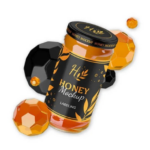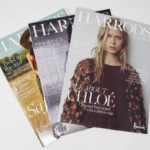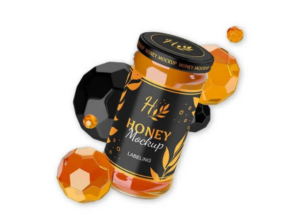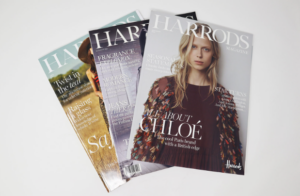Cling film is a plastic film that adheres to itself and containers to form a tight seal. It is a thin plastic film with a thickness of 0.0005 inches. It is also known as plastic wrap, Saran wrap, cling wrap, or food wrap.
This film is most widely used for food packaging as it is composed of non-toxic and safe raw materials. Cling films maintains the freshness of the packaged food items for a prolonged duration. The cling wrap is usually sold on rolls in boxes with a cutting edge.
It clings tightly to the smooth surfaces without using any adhesive. Due to its excellent sealing property, this film is now widely used for industrial and household tasks.
Cling film is highly versatile. It comes in different thicknesses, designs, and types. It is suitable to accomplish almost every kind of packaging requirement.
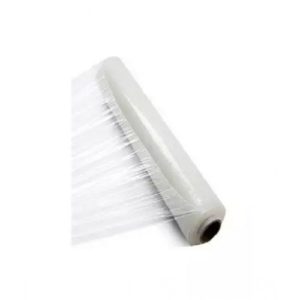
History
Cling wrap was discovered accidentally in 1933 by lab worker Ralph Wiley at Dow chemical. He was having a problem washing out beakers utilized in producing a dry-cleaning product.
The product was first developed into a spray to be sprayed onto fighter planes. This product was supposed to protect them from salty sea spray.
The PVDC (Polyvinylidene Chloride) was the original cling film that was discovered in 1949. Dow Chemical refined the spray and developed saran plastic wrap.
The name Saran was given to cling film as Saran was formed from a combination of John Reilly’s wife’s and daughter’s names, Sarah and Ann Reilly, who was the discoverer of this film.
Properties
The general use of cling film is due to its excellent properties. Some of its unique characteristics are as follow:
- Cling film possesses superior pulling-out properties.
- This film has the best cutting properties.
- The film has excellent sticking properties, and it ensures the utmost protection of the packaged goods.
- Cling wrap possesses superb tensile strength.
- This film is highly renowned due to its best barrier properties. It acts as a superior oxygen barrier and protects the food items from spoilage.
- The film offers high heat durability. It can withstand low and high temperatures.
- You can use this film in microwaves and freezers at a temperature range between -60°C- +160°C.
How Is Cling Film Prepared?
Material Used
Polyvinyl chloride (PVC) was initially used for manufacturing cling film. This chemical remains the most significant constituent globally. The reason for using this material in plastic wrap is its low permeability to water vapor and oxygen.PVC helps to preserve the freshness of food.
But it was reported that PVC could transfer plasticizers into food. Afterward, an alternative of PVC was discovered known as low-density polyethylene (LDPE).
It is cheaper as compared to PVC. However, LDPE is less adhesive than PVC. To enhance the sealing property of PE and tensile strength of the film, linear low-density polyethylene was added.
In some countries, especially the US and Japan, Polyvinylidene chloride is used for preparing plastic wrap. However, some companies like Saran Wrap use other formulations to produce cling wrap due to environmental concerns.
PE, PVC, or PVDC polymers are used for most household plastic wrap. These polymers are derivatives of hydrocarbons like methane or ethylene. These hydrocarbons are produced from petroleum and natural gas.
Types of Cling Film
Plastic wrap is categorized into three types based on the material used for its production. These types are:
- PE Cling Film
- PVC Cling Film
- PVDC Cling film
PE Cling Film
This cling wrap is produced using Polyethylene polymer. This polymer is made directly from an ethylene monomer. PE cling film is highly recommended for food packaging as FDA approves polyethylene for food-safe contact.
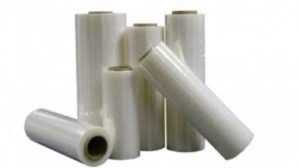
PE Cling Film
PVC Cling Film
This plastic wrap is manufactured from Vinyl chloride. This is derived from ethylene, acetylene, or methane. This film is mainly designed for catering use. PVC Cling film is suitable for all food wrapping except pure fats, oils, and food stored in an oily medium.
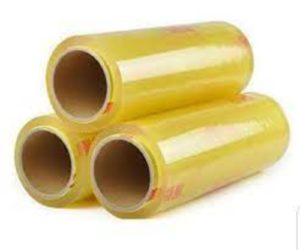
PVC Cling Film
PVDC Cling Film
PVDC cling wrap is made from vinyl chloride and vinylidene chloride. It is a derivative of 1, 1, 2-trichloroethane. This film is mainly used in packaging food, cosmetics, and other perishable or delicate products.
How Is Plastic Wrap Made?
Cling wrap is commonly prepared by the extrusion method. The steps involved in this process are given below:
- The first step consists of the heating of plastic granules until they melt.
- A tube of stretchable plastic is made by forcing the liquid through a die.
- A bubble is generated when compressed air is blown into the tubes.
- The bubble stretches the plastic into the required thicknesses.
- The bubble is distorted amid metal rollers to make a plastic film.
- The plastic film is then rolled onto a large metal roll.
- The plastic wrap is unwound and cut from the large roll.
- Then this wrap is rerolled onto smaller rolls.
- The rolling and unrolling of the cling wrap facilitate to provide more cling.
- The rolls of prepared plastic wrap are then placed into cardboard containers with serrated edges or packed separately for the end-user.
Where Is Cling Film Used?
Cling wrap is used in various applications in almost every field of life. Some of its clever uses are described here:
Food Packaging
Cling film is mostly used for the packaging of edible food items. These films can save food from perishing. It extends its shelf-life and maintains the quality of food. Cling wrap usually protects food from gases, moisture, light, microorganisms, and mechanical damage.
Cling wrap can also decrease food waste, ease the distribution processes, and boost product visibility and microwave ability.
You can also use plastic wrap to keep bananas and flowers fresh for a longer period. This film can also be used to freeze food.
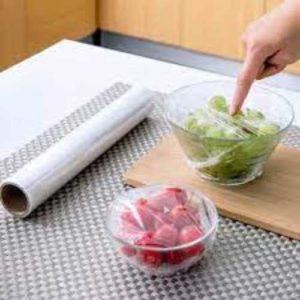
Food Packaging
For Covering Fridge
You can cover the top of the fridge with overlapping sheets of plastic wrap. In addition to providing protection, this wrap will also ease the cleaning of the fridge.
Protect Your Laptop and Mobile
If you plan to give your laptop a break for some days, you must cover its keyboard with cling wrap to protect it from dust and grime. You can also use cling film as a screen protector for your mobile phone.
Keep a Paint Roller from Drying out
You can use a cling wrap to prevent your paint roller from drying out. You can wrap your wet paint rollers in plastic wrap. It will make daily clean-up so much easier.
Household Use
- You can employ cling film for storing your cutlery. This wrap protects your cutlery from dust and breakage. You can use cling wrap for various household chores like:
- You can use this film to fix draft windows at your home.
- This film can be used to unclog your toilet.
- You can use it for fixing shattered makeup.
- If you want to avoid shampoo, conditioner, and body wash spills, then it is easy with a piece of plastic wrap.
- You can fix a corked wine by combining a wadded square foot of plastic wrap and the wine in a pitcher and swirling until the taint is removed.
- You can use cling film for removing stickers and labels and any other adhesives.
Conclusion
Due to the applicability of cling wrap in an extensive range of fields. By covering your food in this film, you would not need to worry about the protection and spoilage of the food items.
You can select any type of cling film according to your need. At Kingchuan You can get this film in a wide range of thicknesses at a reasonable price. This film can provide you with utmost satisfaction. So don’t delay and grab a roll of cling wrap to protect your food and other household items

